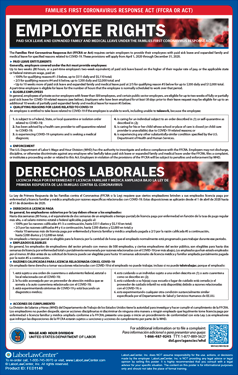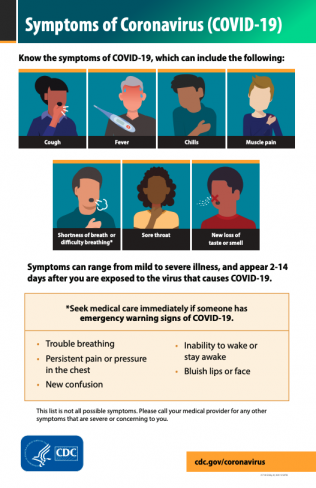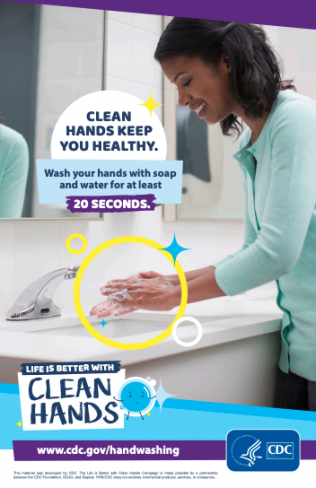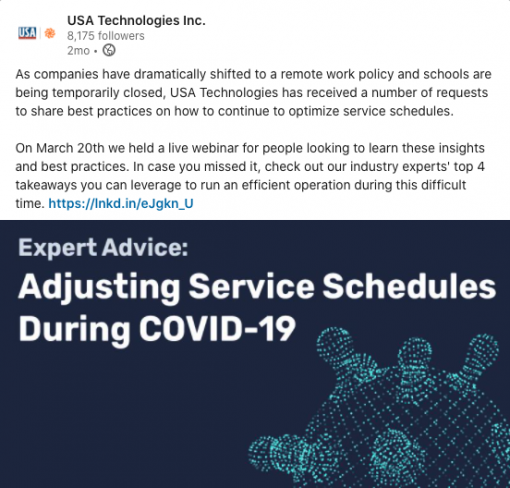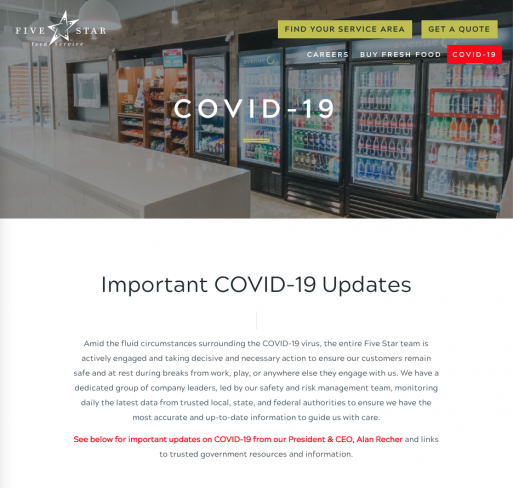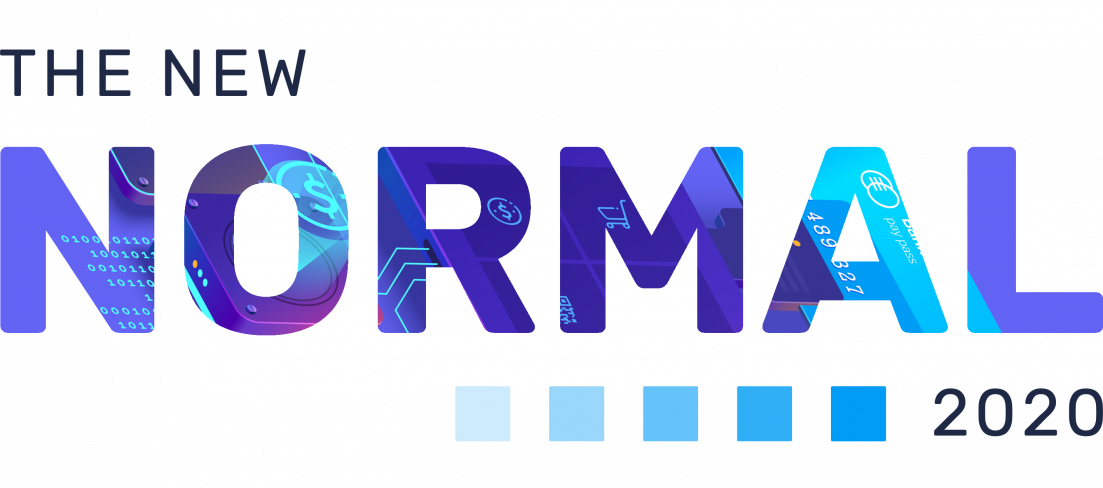
As the country begins its recovery from the Covid-19 crisis, federal and local mandates are starting to lift across the country, and businesses are thinking about how to re-open their doors to employees and customers. According to a survey conducted in May by the National Alliance of Healthcare Purchaser Coalition, 90% of companies are deliberating returning their workforce to the office in phases.1 What should you be considering? The following will offer five steps that can help you prepare to re-open safely and successfully.
1. Re-evaluate
The pandemic has changed what products consumers are looking to purchase, as well as where and how they are buying them. Now is a good time to take a closer look at how to maximize opportunities and adjust as needed. As workers return to offices, and students to schools, can you make your vending machine or kiosk a destination with better tailored products and payment options?
To start, we recommend reviewing what products are not moving and replace them with items that are in high demand for consumers, such as swapping candy or beauty items for caffeinated beverages and PPE supplies in locations that are central to essential workers and first responders. Also, consider surveying low trafficked areas to see if the payment options include a cashless or contactless option, as the use of cash has declined since the onset of the Coronavirus. Do consumers need to be better advised that a machine accepts Apple Pay, Google Pay, or Samsung Pay? Will stickers help?
A quick evaluation of the underlying factors for low trafficked locations and machines, can offer an easy solution.
2. Create a plan
Between the Families First Coronavirus Response Act (FFCRA) and the CARES Act, companies have a lot of new mandates to adhere to. With this in mind, it’s important to develop and implement a COVID-19 workplace health and safety plan that includes monitoring strategies, communications, and health protocols. Download a copy of our COVID-19 Best Practices checklist to help get your business better prepared.
MONITORING STRATEGIES:
- Check for signs and symptoms of employees upon arrival
- Monitor developments of local and federal authorities
- Develop flexible leave policies
COMMUNICATIONS:
Create a welcome package for employees that includes:
- Hand sanitizer
- Face mask – consider one with company logo
- Booklet with Fact sheet on how to:
- handwash, how to stop germs
- symptoms of COVID-19, and what to do if you are sick
- new company policies on health and safety, including the use of masks, etc.
- emergency protocols if someone at work tests positive
In addition, ensure all employees are aware of new protocols, as well as what options they have regarding childcare, working from home, or what to do if they don’t feel safe coming into the office. As employees adjust, think about getting input from employees on what is working and what isn’t, recommendations on improvements, and such, via survey or an anonymous email box to HR.
Post signs/posters around the workplace
- FFCRA COVID-19 poster (this is a mandatory requirement)
- How to recognize symptoms
- Hand hygiene
- COVID-19 symptoms
- Social distancing
HEALTH PROTOCOLS:
Create a plan in the event that an employee shows signs of COVID-19. Have a list of available support services ready for employees who become sick. State and local health websites are a good place to locate medical and testing facilities. Also, create an emergency protocol, in case an employee does get sick and has been in the office.
To limit possible exposure, either close or limit the use of shared spaces such as conference rooms or warehouse spaces. Consider creating one-way points of entry and exit.
3. Sanitize
Employers are using many strategies to ensure the safety of their employees and they are looking to the Centers for Disease Control (CDC) for guidance. Some options to consider are:
- Increased cleaning and disinfecting
- Wearing facial masks and/or gloves
- Social distancing in the workplace
- Workplace shields
- Alternating shifts
- Plastic barriers placed between employees and customers as needed
Make sure that you have enough PPE supplies available for all of your employees and customers. Develop sanitization protocols and schedules to discuss these with your employees before re-opening your facility.
4. Go contactless
Consider going contactless to limit exposure between your employees and your customers. Several ways to go contactless:
- Leverage software to monitor sales and purchase trends for knowing exactly when to service a location since not all locations will be back to full capacity
- Add cashless payment options to your public-facing machines and display proper signage so consumers know they can pay via contactless and mobile wallet
- Add technology to your facility, such as tablets, to take the place of paperwork and organize your back-end operations
- Utilize Clean Keys to open doors or touch screens
- Add antimicrobial screen protectors to any touch screens
- Add signage to indicate new products and/or payment methods
5. Stay connected
It is important to keep an open channel of communication with your clients and customers to let them know what changes your business is making and to get feedback about what they are looking for. Popular methods of communicating with customers are:
- Social Media
Leverage accounts like Twitter, LinkedIn, Facebook, or Instagram to let your customers know about additional services you are offering, your cleaning guidelines, or what changes you are instituting within your workplace. Make sure you express that their safety & the safety of your employees is a top priority.
- Email
Keep customers updated through timely emails letting them know of any changes or updates to your products, services or operations.
- Website
Add a section to your home page or create a COVID-19 dedicated page to your website that offers updates on changes to your business such as: new operating hours, updates to health and sanitization procedures, or product/service delays. Five Star Food Service’s website is a good example.
- Webinar
Create a 30-minute educational session that talks about your new policies, and cleaning practices for all your clients to easily attend and ask questions in an interactive format.
- Survey
To stay informed about your clients impacts related to COVID, create a quick survey – no more than five minutes to collect feedback.
Additional Resources:
In addition to these five tips, we have also listed additional resources that we thought were worth sharing. These guides offer an expanded selection of best practices to help you create your next steps for re-opening.
CDC: Resuming Business Toolkit for Coronavirus Disease 2019
NAMA: Convenience Services Re-opening Guidelines
AMOA: “Safety of Currency-Activated Equipment in the COVID-19 Environment”
OSHA: Guidance on Preparing Workplaces for COVID-19
Every state’s rules for reopening (via 24/7 Wall St.): Special Report

